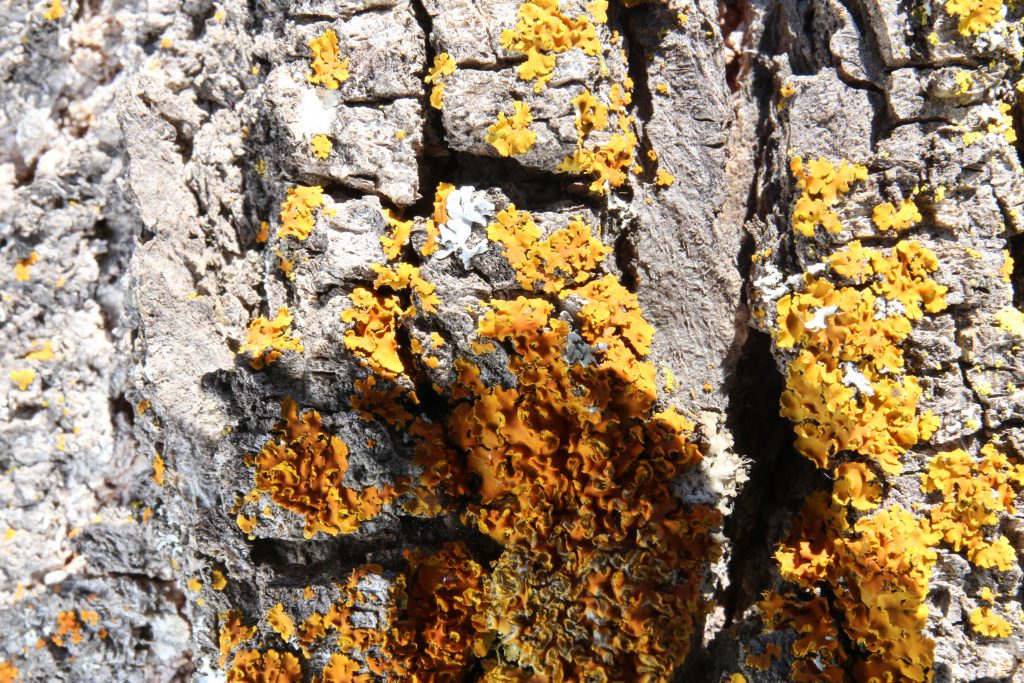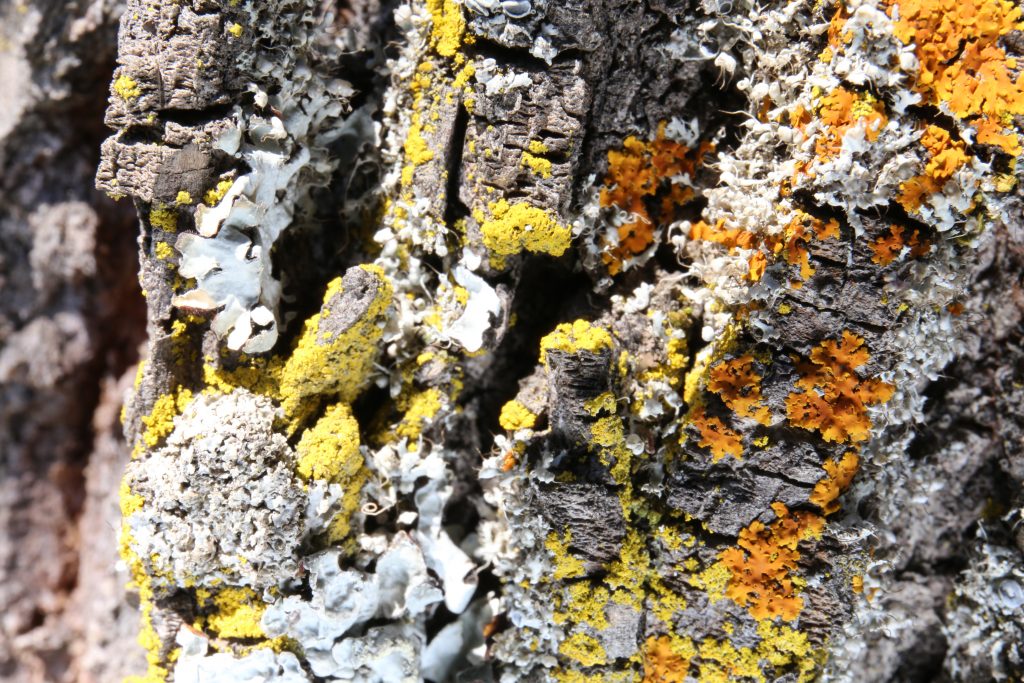Trees
Before returning to the starting point at parking lot #5, stop at the two lindens (Tilia cordata) and mountain ash tree (Sorbus sp.) between them, next to the heating plant of the university (with 2 large chimneys) (Fig. 13-1). Also in the vicinity are a paper birch and crab apple. Right in front of the Agora (main) entrance to the university are 2 imposing red oak trees (Quercus rubrum) (Fig. 13-2). All the way by the main entrance to the university are two trees of yew (either English Taxus baccata or Western T. brevifolia, both suffering from Winter damage, Fig 13-3).
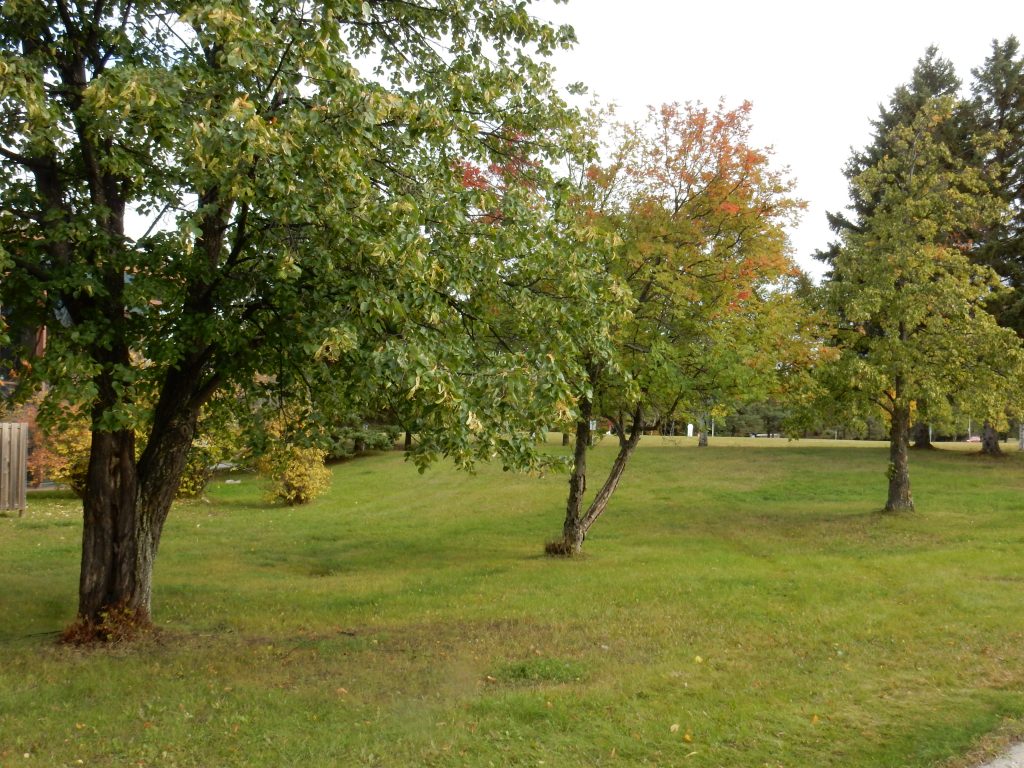
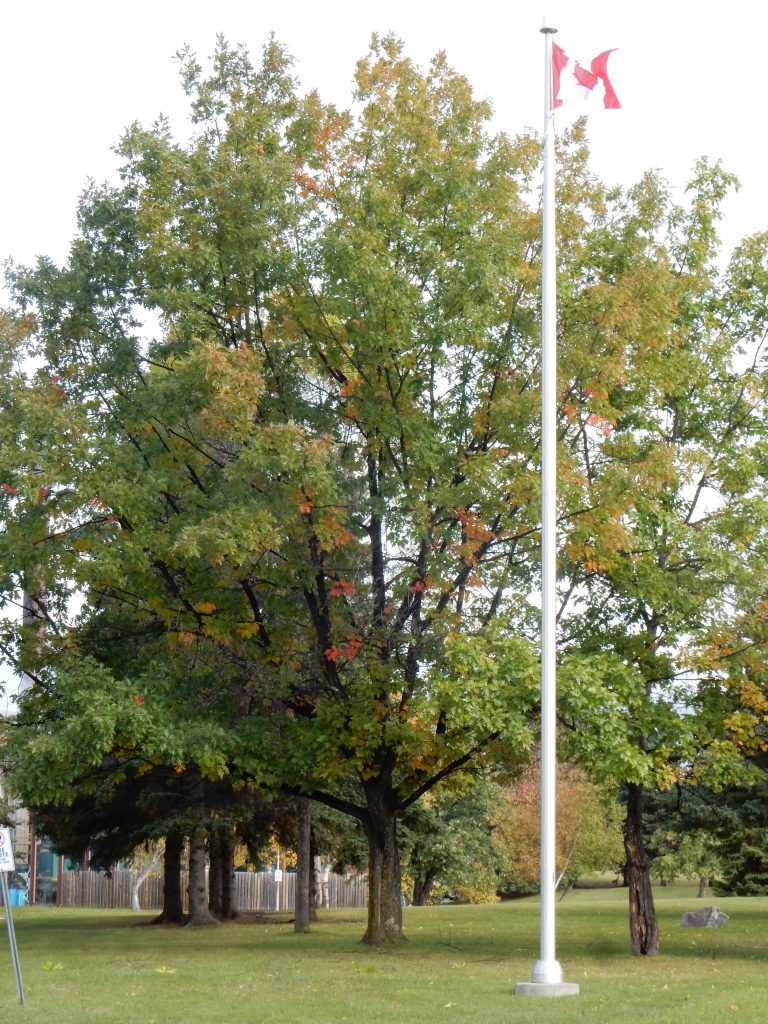
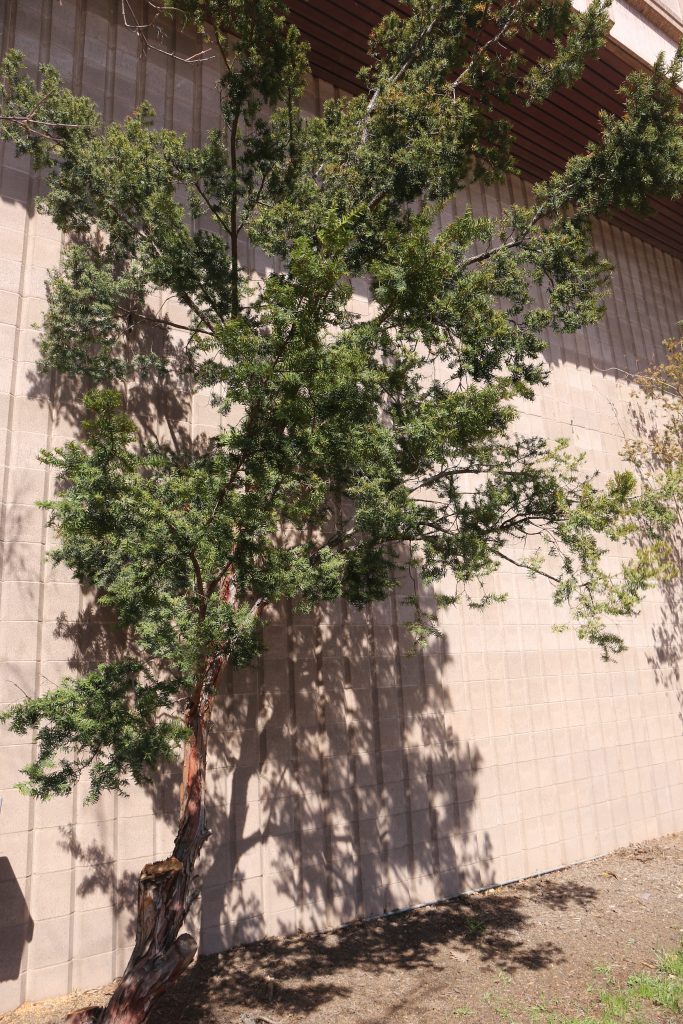
Lichens
The linden and mountain ash trees seem to be exposed to Winter sun and wind, causing extensive damage to the bark. The bark seems to be good substrate for lichens such as Physcia (Fig. 13-4). This one appears to be ciliate, hence most likely P. adscendens.
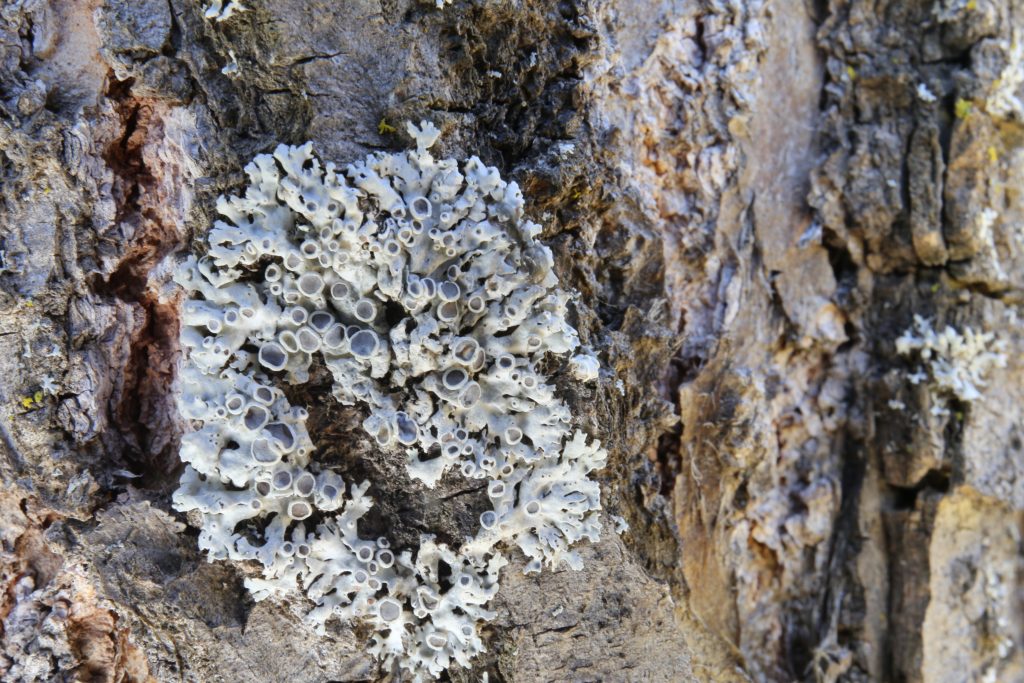
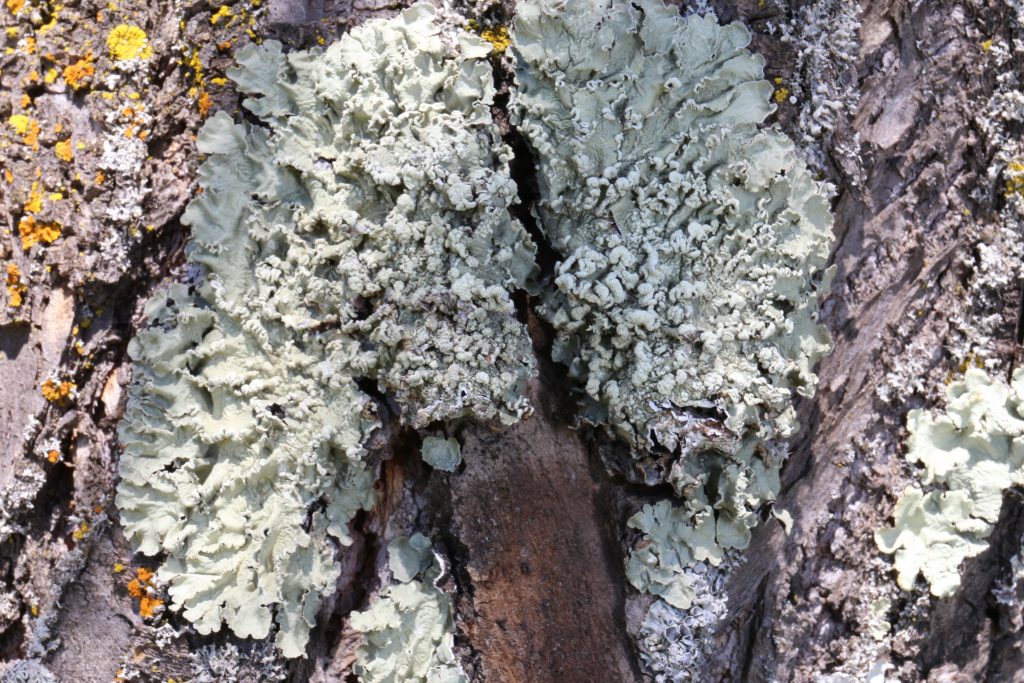
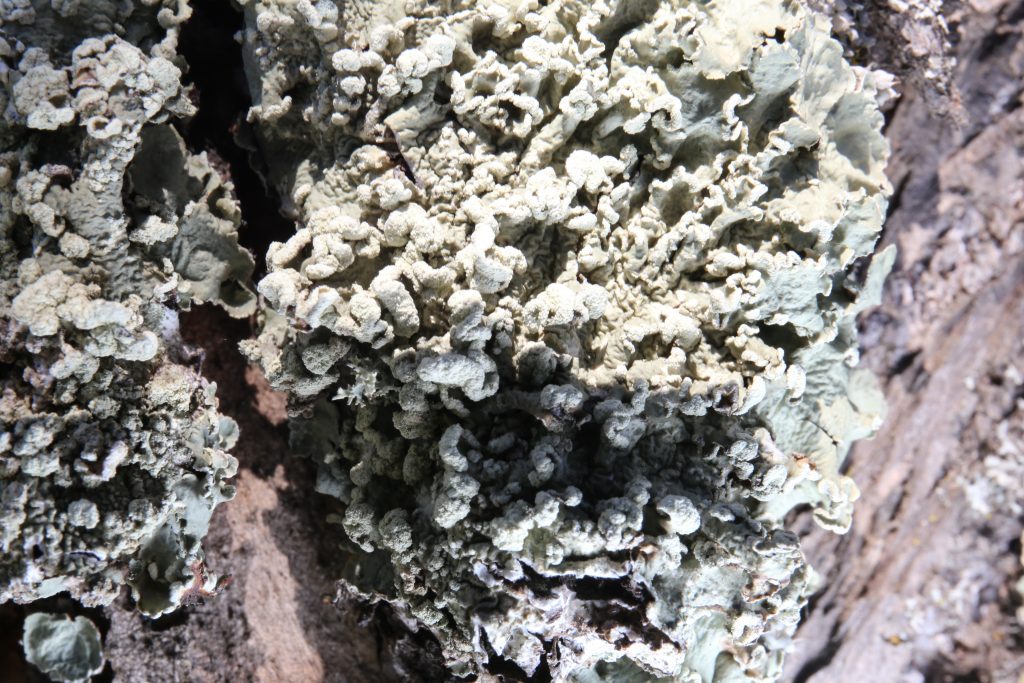
Brightly coloured common city tree lichens (below) were already encountered on the white poplar by Avila center.
